The Cube Method for Powerlifting: Techniques for Success
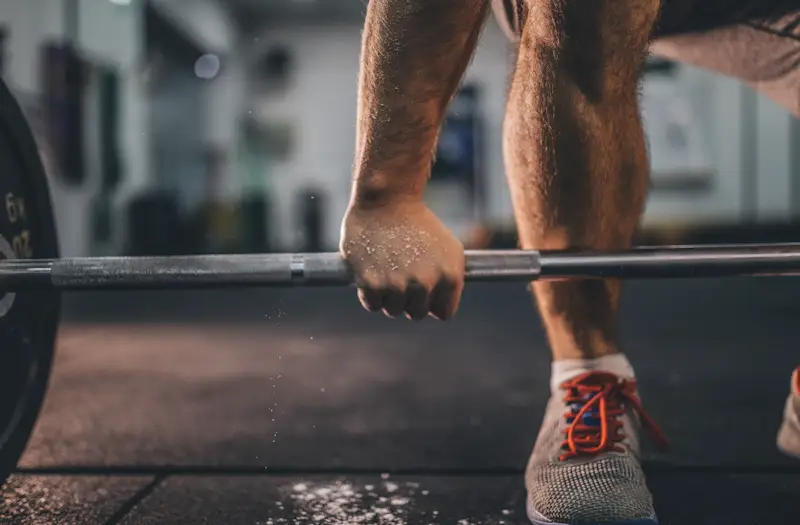
What's In This Article
- Key Highlights
- Introduction
- Overview of the Cube Method
- Breaking Down the Cube Method
- Implementing the Cube Method
- The Cube Method in Action
- Strengths and Weaknesses of the Cube Method
- Customizing the Cube Method
- Community and Support
- Conclusion
- Frequently Asked Questions
Key Highlights
The Cube Method is a powerlifting training program by Brandon Lilly that focuses on the squat, bench press, and deadlift.
- The program incorporates heavy strength, explosive, and repetition training to target different aspects of strength development.
- The Cube Method utilizes a structured periodization approach to prevent plateauing and address weak points.
- Assistance work and bodybuilding exercises are included to address individual weaknesses and build muscle.
- The program suits powerlifters looking to improve their performance and break through plateaus in their training.
The Cube Method for Powerlifting provides a comprehensive program that covers all aspects of strength training and helps athletes reach their goals on the platform.
Introduction
The Cube Method, developed by powerlifter Brandon Lilly, is a comprehensive powerlifting training program that focuses on building strength in the squat, bench press, and deadlift. It is designed to help powerlifters break through plateaus and achieve their maximum potential on the platform.
What sets the Cube Method apart from other powerlifting programs is its unique approach to training. Instead of solely focusing on heavy lifting or high-repetition work, the Cube Method incorporates a combination of heavy strength, explosive, and repetition training. This allows lifters to target different aspects of strength development and continue making progress in their training.
The Cube Method also utilizes a structured periodization approach. Each training cycle consists of three weeks, with each week focusing on a different training style for each lift. This rotation of training modes helps prevent plateauing and keeps the training fresh and challenging.
In addition to the main lifts, the Cube Method includes assistance work and bodybuilding exercises to address individual weaknesses and build overall muscle mass. This comprehensive approach ensures that every aspect of strength is addressed, leading to well-rounded progress and improved performance on the platform.
Whether you are a beginner or an experienced lifter, the Cube Method can be customized to meet your specific needs and goals. This program allows for continuous progress and helps powerlifters reach their maximum potential in the sport.

Overview of the Cube Method
The Cube Method is a powerlifting training program developed by Brandon Lilly, a renowned powerlifter. It is a comprehensive system focusing on the three main powerlifting lifts: squat, bench press, and deadlift. The program incorporates a unique combination of heavy strength training, explosive work, and high-repetition training to target different aspects of strength development. The Cube Method follows a structured periodization approach, allowing lifters to progress and avoid plateaus continually. It is a popular choice among powerlifters looking to improve their strength and performance on the platform.
Origins and Evolution of the Cube Method
Brandon Lilly, a highly respected and accomplished powerlifter, developed the Cube Method. Lilly drew inspiration from his experiences training at Westside Barbell, which is known for its focus on explosive and dynamic strength training. However, he also took inspiration from old-school powerlifting methods, which emphasized raw strength and overall muscle development.
Lilly wanted to create a program that combined explosive power and raw strength. The result was the Cube Method, which incorporates heavy strength work, explosive training, and high-repetition work into a structured program. This method has gained popularity among powerlifters looking to break through plateaus and improve their platform performance.
Core Principles of the Cube Method
The Cube Method revolves around three core principles: heavy strength training, explosive work, and high-repetition training. These principles are applied to the main powerlifting lifts—squat, bench press, and deadlift—to develop overall strength and improve platform performance.
The heavy strength training component focuses on lifting heavy weights for low reps. This builds maximum strength and allows lifters to handle heavier loads during competition. The explosive work includes exercises such as box jumps, kettlebell swings, and medicine ball throws, which develop power and explosiveness.
The high-repetition training component targets muscular endurance and hypertrophy. Lifters perform higher rep ranges with lighter weights to stimulate muscle growth and improve endurance. By incorporating these three core principles into the cube program, lifters can achieve a well-rounded training stimulus that improves their performance in powerlifting competitions.
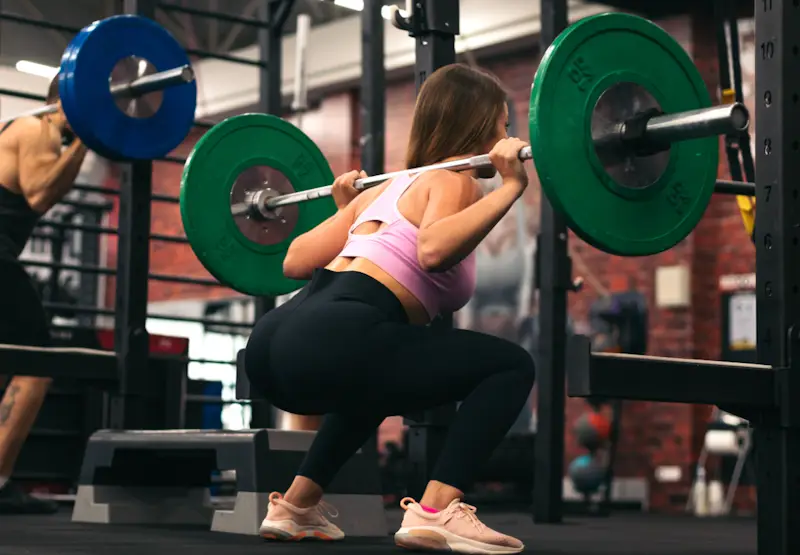
Breaking Down the Cube Method
The Cube Method has three main components: power, speed, and hypertrophy. Each component focuses on a specific strength development aspect and complements the other components for optimal results.
The power phase emphasizes heavy strength training and aims to build maximum strength. The speed phase focuses on explosive work and aims to improve power and speed off the floor or the chest. The hypertrophy phase targets muscular endurance, promotes muscle growth, and improves overall strength.
By incorporating these three components into the cube program, lifters can develop a well-rounded and balanced strength training program that leads to continuous progress and improved platform performance.
The Three Phases: Power, Speed, and Hypertrophy
The Cube Method is divided into three distinct phases: power, speed, and hypertrophy. Each phase focuses on specific aspects of strength development and is designed to work synergistically to improve performance on the platform. Here is a breakdown of each phase:
- Power Phase:
- Heavy strength training emphasizing low reps and high intensity.
- Focuses on building maximum strength and handling heavier loads.
- Main lifts are performed at high intensity, focusing on maintaining proper technique.
- Speed Phase:
- Explosive work and dynamic movements to improve power and speed.
- Incorporates exercises such as box jumps, kettlebell swings, and medicine ball throws.
- Aims to develop explosiveness off the floor or the chest in the main lifts.
- Hypertrophy Phase:
- Higher rep ranges with lighter weights to promote muscle growth and endurance.
- Targets muscular hypertrophy and promotes overall strength and muscular endurance.
- Assistance exercises and bodybuilding-style movements are incorporated.
By cycling through these three phases, lifters can target different aspects of strength development, prevent plateaus, and continually progress in their powerlifting journey.
Weekly Training Split and Exercise Selection
When following the Cube Method for powerlifting, structuring your weekly training split and selecting exercises strategically is crucial. The program typically involves organizing your training days around the main lifts, such as bench press, squat, and deadlift. Incorporating a mix of powerlifting-focused exercises, explosive work, and assistance lifts tailored to your weak points is essential. Balancing intensity and volume throughout the week can help you effectively target different aspects of strength training. Planning your weekly schedule thoughtfully can optimize your progress and performance on meet day.
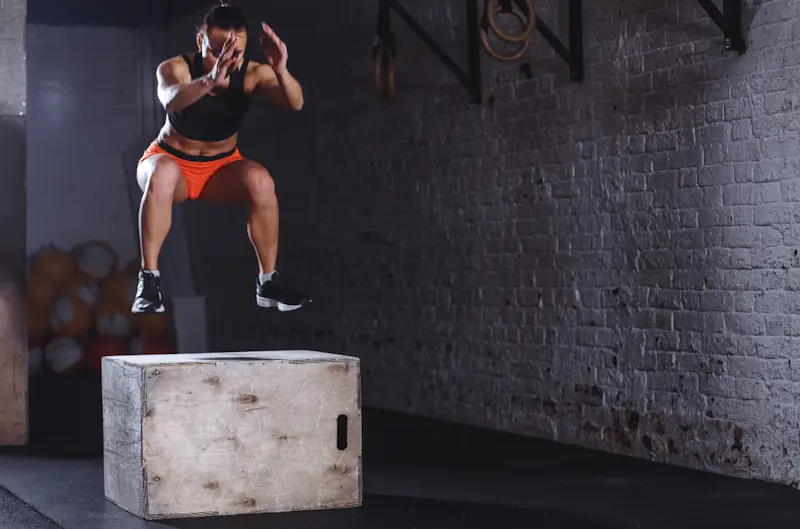
Implementing the Cube Method
To effectively implement the Cube Method, set up your training cycle focusing on adjusting intensity and volume. Tailor the program to your needs by incorporating accessory work that targets weak points. Utilize explosive work to develop power and strength. Understanding the core principles is crucial for successful execution. Adjusting intensity and volume based on your progress is key to continuous improvement.
Setting Up Your Training Cycle
When setting up your training cycle using the Cube Method for Powerlifting, it's crucial to understand the balance between power, speed, and hypertrophy phases. Brandon Lilly's program emphasizes rotating these phases strategically to maximize strength gains. Plan your weekly training split carefully, focusing on the main lifts while incorporating assistance work to target weak points. Adjust intensity and volume to ensure progressive overload and prevent plateauing. This structured approach minimizes the guesswork and optimizes performance for powerlifters aiming to peak on a meet day.
Adjusting Intensity and Volume
In the Cube Method, adjusting intensity and volume is key to progression and avoiding plateaus. Brandon Lilly emphasizes listening to your body, understanding fatigue indicators, and modifying intensities based on readiness. Volume adjustments ensure adequate recovery between sessions, preventing overtraining. Gradually increasing intensity with heavier weights challenges the lifter without risking injury. Monitoring volume closely during different phases of the program optimizes performance. This strategic manipulation keeps the lifter progressing steadily towards their goals, providing a structured approach to continuous improvement.
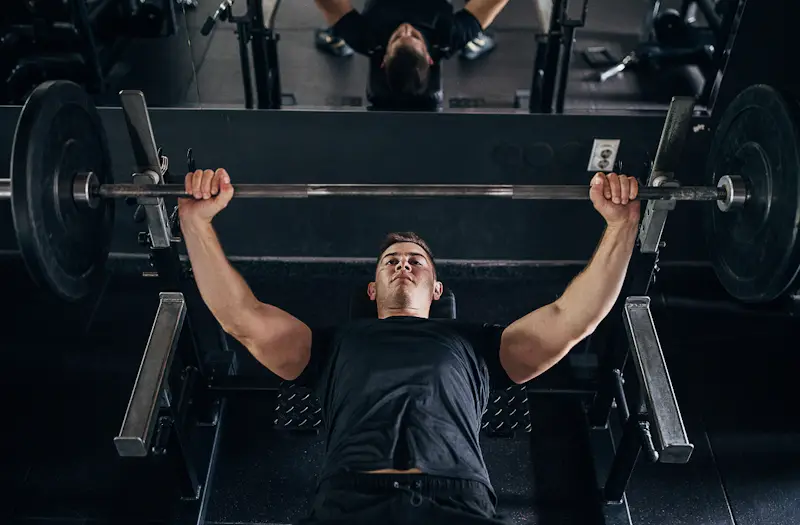
The Cube Method in Action
The Program showcases the practical application of this powerlifting strategy. Following Brandon Lilly's Cube Method, lifters engage in structured training cycles focusing on power, speed, and hypertrophy. This tailored approach addresses weaknesses through specific lifts, enabling progress and strength gains. Tracking performance metrics and adjusting further fine-tuning the program for optimal results, making it a comprehensive guide for serious powerlifters looking to enhance their performance.
A Sample Cube Method Program
Week 1: Heavy
Day 1: Heavy Squat
- Squat: 5 sets of 2-3 reps at 85-90% 1RM
- Front Squat: 3 sets of 6-8 reps
- Romanian Deadlift: 3 sets of 8-10 reps
- Ab Wheel Rollouts: 3 sets of 10-12 reps
Day 2: Explosive Bench Press
- Bench Press (Speed Work): 6 sets of 3 reps at 70% 1RM, focus on explosive upward movement
- Close Grip Bench Press: 3 sets of 6-8 reps
- Pendlay Rows: 3 sets of 8-10 reps
- Face Pulls: 3 sets of 12-15 reps
Day 3: Hypertrophy Deadlift
- Deadlift: 4 sets of 8-10 reps at 70% 1RM
- Pull Throughs: 3 sets of 10-12 reps
- Bulgarian Split Squats: 3 sets of 8-10 reps per leg
- Hanging Leg Raises: 3 sets of 10-15 reps
Week 2: Explosive
Day 1: Explosive Squat
- Box Squat (Speed Work): 6 sets of 2 reps at 60% 1RM, focus on explosive power from the bottom
- Lunges: 3 sets of 8-10 reps per leg
- Good Mornings: 3 sets of 8-10 reps
- Planks: 3 sets, 60 seconds each
Day 2: Hypertrophy Bench Press
- Bench Press: 4 sets of 8-10 reps at 70% 1RM
- Incline Dumbbell Press: 3 sets of 8-10 reps
- Bent Over Rows: 3 sets of 8-10 reps
- Tricep Dips: 3 sets of 10-12 reps
Day 3: Heavy Deadlift
- Deadlift: 5 sets of 2-3 reps at 85-90% 1RM
- Block Pulls: 3 sets of 5 reps
- Step Ups: 3 sets of 10 reps per leg
- Cable Crunches: 3 sets of 10-12 reps
Week 3: Hypertrophy
Day 1: Hypertrophy Squat
- Squat: 4 sets of 8-10 reps at 70% 1RM
- Leg Press: 3 sets of 10-12 reps
- Stiff-Legged Deadlifts: 3 sets of 8-10 reps
- Calf Raises: 3 sets of 15-20 reps
Day 2: Heavy Bench Press
- Bench Press: 5 sets of 2-3 reps at 85-90% 1RM
- Military Press: 3 sets of 6-8 reps
- Lat Pulldowns: 3 sets of 8-10 reps
- Skull Crushers: 3 sets of 8-10 reps
Day 3: Explosive Deadlift
- Deadlift (Speed Work): 6 sets of 3 reps at 70% 1RM, focus on speed
- Power Cleans: 3 sets of 5 reps
- Single Leg Deadlifts: 3 sets of 8 reps per leg
- Toes to Bar: 3 sets of 10-15 reps
Notes
- Warm up thoroughly before each session with mobility work and light cardio.
- Rest days should be placed between workout days to allow for recovery.
- Adjustments to volume and intensity should be made based on individual recovery and progression.
- Deload every fourth week by reducing volume and intensity to promote recovery.
Tracking Progress and Making Adjustments
Tracking your performance is crucial to ensure continuous progress with the Cube Method for Powerlifting. Regularly logging your lifts, rep schemes, and perceived exertion levels allows for an accurate assessment of progress. By analyzing these data points, adjustments can be made to optimize training intensity and volume. Tracking metrics such as rep maxes and fatigue levels helps identify trends and improvement areas. This systematic approach to monitoring performance enables lifters to fine-tune their training protocols effectively.
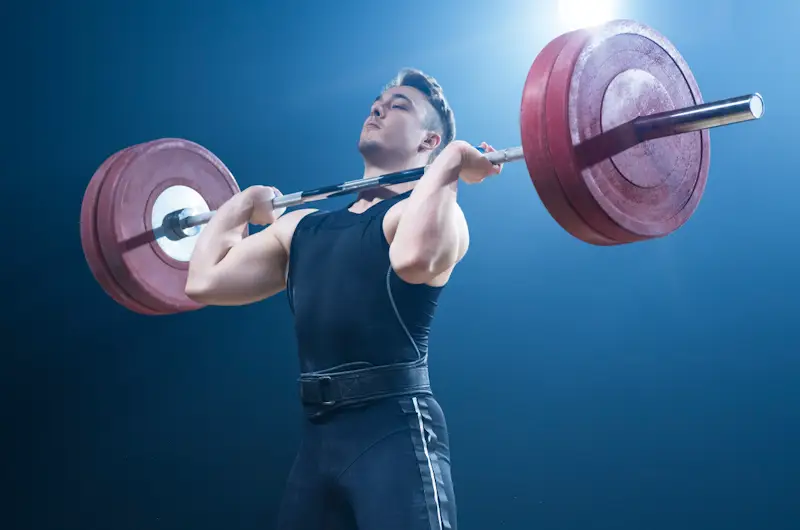
Strengths and Weaknesses of the Cube Method
Analyzing the Cube Method's benefits for powerlifters reveals its effectiveness in building strength across all main lifts. By incorporating various training focuses like power, speed, and hypertrophy, lifters can address weak points and enhance overall performance. However, potential drawbacks may include the complexity of adjusting intensity and volume, which requires careful monitoring to avoid burnout. Mitigate these by customizing the program to individual needs and ensuring proper recovery strategies. Understanding these aspects is essential for maximizing the Cube Method's benefits while minimizing its limitations.
Analyzing the Benefits for Powerlifters
Powerlifters benefit from the Cube Method's structured approach to training, which enhances strength gains and effectively addresses weak points. Brandon Lilly's method integrates powerlifting-specific principles, focusing on main lifts and variation to prevent plateaus. By rotating through power, speed, and hypertrophy phases, lifters experience well-rounded development. The program's emphasis on specificity, varying intensity, and tailored assistance work caters to individual needs, optimizing meet-day performance and fostering continuous progress.
Potential Drawbacks and How to Mitigate Them
While the Cube Method offers a structured approach to powerlifting, some drawbacks may arise. One challenge is the potential for burnout due to the intense nature of the program. Incorporating deload weeks and listening to your body for signs of overtraining is crucial to mitigate this. Another issue could be limited focus on specific weaknesses. To address this, supplementing the program with targeted assistance work tailored to individual needs can help overcome potential shortcomings.
##7##
Customizing the Cube Method
Tailoring the Cube Method to individual needs is key for optimal results. Lifters can enhance performance by tweaking assistance work and volume based on weak points. Effectively incorporating accessory exercises can address specific weaknesses and contribute to overall strength gains. Customizing the program should focus on fine-tuning without deviating from the core principles. Understanding one’s body and training goals is crucial in adapting the Cube Method to individual requirements. This customization ensures targeted progress towards powerlifting goals.
Tailoring the Program to Your Needs
To effectively tailor the Cube Method, understand your weaknesses and adjust assistance work accordingly. Customize based on whether you need more hypertrophy, strength, or explosive work. Modify the main and assistance lifts based on your weak points in priority. Adjust intensity and volume to suit your recovery capacity and goals. Incorporate elements that address your needs and contribute to overall progress to make the program your own. This personalized approach maximizes the program's effectiveness for individual powerlifting journeys.
Incorporating Accessory Work Effectively
When incorporating accessory work effectively into the Cube Method powerlifting program, it's crucial to target weak points identified during training. These additional exercises should complement the main lifts, build strength, and address specific weaknesses. Brandon Lilly’s Cube Method emphasizes the importance of tailored assistance lifts supporting the lifter's needs. By strategically integrating accessory work, lifters can enhance their performance on the main power lifts, leading to overall strength gains and improved performance on meet day.
##8##
Community and Support
Engaging with a community can be pivotal for powerlifters following the Cube Method. Whether seeking advice or motivation, finding a training group or coach can elevate your performance. Additionally, online resources and communities cater to the evolving needs of powerlifters globally. The Cube Method thrives on shared experiences and insights from seasoned lifters, fostering a supportive environment conducive to growth and progress. Accessing such networks can provide invaluable guidance and camaraderie throughout your powerlifting journey.
Finding a Training Group or Coach
Finding a reliable training group or coach can significantly impact your progress when delving into powerlifting. A knowledgeable coach can provide valuable feedback, ensure proper technique, and tailor the Cube Method to your needs. Joining a supportive training group can offer motivation, accountability, and a sense of community. Look for coaches or groups experienced in strength training, powerlifting programs, and understanding the nuances of the Cube Method. Their guidance can elevate your performance and refine your training approach.
Online Resources and Communities
Online resources and communities are vital in supporting powerlifters following the Cube Method. Platforms like forums, social media groups, and coaching websites offer valuable insights, tips, and motivation. Websites dedicated to powerlifting programs, including the Cube Method, provide detailed information on training cycles, exercise variations, and progress tracking. Engaging with like-minded individuals online can enhance training experiences and help address any uncertainties or challenges during powerlifting journeys. The Cube Method community fosters camaraderie and knowledge sharing amongst powerlifters of all levels.
Conclusion
In wrapping up, the Cube Method is a structured and effective approach to powerlifting, emphasizing power, speed, and hypertrophy phases. This method offers a systematic way to progress and track improvements, catering to both experienced lifters and beginners seeking strength gains. One can optimise training cycles and enhance performance by understanding its core principles and customizing it to individual needs with accessory work. Engaging with a supportive community and resources further enriches the journey towards powerlifting excellence. Consistency and dedication are key to unlocking the full potential of the Cube Method in achieving strength goals.
Frequently Asked Questions
Can Beginners Use the Cube Method Effectively?
Yes, beginners can use the Cube Method effectively by starting with lighter weights to master form and gradually increasing intensity. Following the structured phases and adjusting the volume accordingly can help beginners progress safely. Tailoring the program to individual needs is key.
How Does the Cube Method Compare to Traditional Powerlifting Programs?
The Cube Method differs by rotating max, dynamic, and repetition effort days, offering variety compared to traditional powerlifting programs. It addresses weaknesses through targeted training phases, enhancing overall strength and performance.
What Are the Key Tips for Success with the Cube Method?
To excel with the Cube Method, focus on periodization, rotate main lifts strategically, prioritize recovery, and track progress diligently. Customizing accessory work and seeking community support can further enhance your results. Consistency and patience are key to mastering this effective powerlifting program.